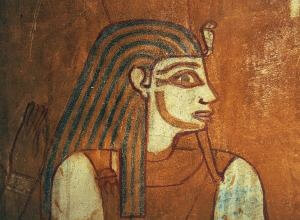Egyptian civilization holds many secrets and hidden truths that are never revealed. The greatest land of Egypt, which is along the bank of Nile, has been mentioned in modern as well as ancient history. Around 3100 BC, after the political confederacy of lower and Upper Egypt, Pharaoh became the supreme of Egypt. Egyptian deities who were made were also worshiped by Egyptians. They believed that they should not made, them angry at any cost. Following is the list of Egyptians Gods of ancient times.
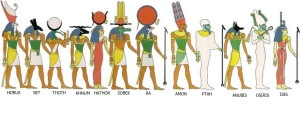
AMUN-Ra “The Hidden One”
Amun-Ra was considered as the Kings of Gods and Goddesses as Greek considered the Zeus. It was believed that Amun was Father of all Pharaohs and it’s female version “Amunet”, was considered as “The Hidden One”. Amun and Mut with were worshiped throughout the ancient Egypt with their offspring Khonsu “Moon God”. Amun was not only worshiped in Egypt, but also outside the Egypt as Amun Ra, when it merged with Sun God Ra of ancient Egypt.

MUT “The Mother Goddess”
The meaning of Mut is, mother in Egyptian language, is a primal God in ancient Egypt who wore two crowns on her head. Each crown on her head represented Upper and Lower Egypt. It was believed that “She gives birth to others, but she was not born by anyone”. Mut was also represented as Vulture in hieroglyphs. With integration with other deities, Mut was often portrayed as Cat, Cow, Cobra and even Lioness. Mut was the mother of Khonsu, the son of Amun Ra. Mut with her different associations and with other arbitraries was supported by many Egyptian rulers who followed the civilization.
 OSIRIS “The King of Living”
OSIRIS “The King of Living”
Osiris was oldest child of Earth God “ZEB” and Sky Goddess “NUT”. Orisis was worshiped as the God of afterlife as Egyptians believed that there is also a life after death. Osiris was painted with blue paint which indicated that he was the God of vegetation and was responsible for the renewal, growth and took in charge for fertile and vegetation around the banks of Nile. Orisis married her own sister “Isis” and murdered by his brother “Seth”. Although Orisis was dead, he came back to life with the magic of Isis for conceiving a child. “Hours” was the offspring of Isis and Orisis, who avenged the death of his father and arose as the new king of Egypt. While, Orisis became the God of underworld and assisted for the afterlife of population and Pharaohs.
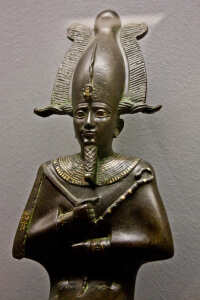 RA “The God of Sun & Radiance”
RA “The God of Sun & Radiance”
A midday sun as known Ra or Re holds important position in the Egyptian history. The God of Sun who had a sun disk around his head was believed to create this world. Every sunrise and sunset was symbolized as restoration process. Portrayed as a falcon-headed man, he and Horus shared an union which led him known as the Horus of the Horizon. Many ancient Egyptian gods were fused with Ra and many were produced by him as well with some rival gods like Apep, Isis and Path.

ANUBIS “The Divine Embalmer”
Before Osiris took over, Anubis controlled the Afterlife. Being a psychopomps Anubis was the offspring of Ra and Nephthys was known for mummifying the dead ones and guiding the dead soul towards the afterlife. Having his skin tone black, he is symbolized as the dark Nile deposits which eased off farming and making it a successful one. With the head of a jackal and a body of the man, Anubis also symbolized Renaissance and the staining of the dead bodies after the embalming.

HORUS “God of Vengeance”
Horus had a special position in the Ancient Egypt. Considered as the son of the Osiris and Isis, he avenged his father’s death and ruled Egypt. As per other myth, he was considered as the brood of the “ZEB” and “NUT”, however, this falcon-headed man with the crown of red and white was worshiped as the God of Sky, War, Protection and Light. The eye of Horus or the Wedjat Eye was embodied as the goddess Wadjet and was popularly known as “The Eye of the Ra”. It symbolized that everything is being watched upon from above.
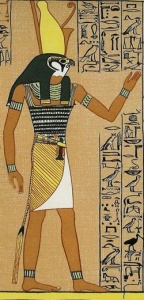 HATHOR “Goddess of Motherhood”
HATHOR “Goddess of Motherhood”
Considered as “Mistress of the West”, Hathor was worshiped as she welcomed the dead into the next life. An offspring of Ra, she exemplified paternity and female love. Egyptians offered prayer to her as Goddess of Music and Dance. She was believed to provide a blessing as a helper of women during pregnancy and childbirth. Humble, affectionate and kind to all living and dead she was also known as Lady of Earth, Heaven and Underworld.
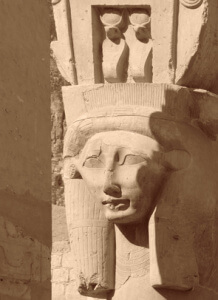
THOTH “God of Knowledge and Wisdom”
A mediator who settled the disputes between good and evil, Thoth was considered as the god self-created. Master of both divine and physical laws, he maintained the universe with his mastery in calculations, along his equivalent “Ma’at”. Egyptians acknowledge him as an author of magic, science and philosophy. A baboon headed man was considered to be the most scholarly god in the ancient history. Earlier considered as moon god for keeping the time count even when the sun is not there, Thoth was known as the one who created a 365-day calendar.
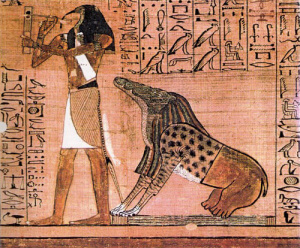 SEKHMET “Goddess of War and Healing”
SEKHMET “Goddess of War and Healing”
Leading and Protecting the Pharaohs in the war who was the daughter of Ra, Sekhmet was looked as a lioness in ancient Egypt known for her violent characters. Also known as “The Powerful One” she destroyed the enemies of her allies. Her appearance had a solar disk with Uraeus which was coupled with divine and royalty. Sekhmet assisted goddess Ma’at in the Judgment Hall of Orisis which also made her known as an authority.
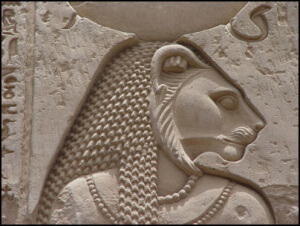
GEB “God of Earth”
Also described as the Father of Snakes GEB was a provider of a crop and healing. With goose on his head this bearded man was believed to have caused earthquakes whenever he laughed. Known as the offspring “SHU” (the god of air) and “Tefnut” (the goddess of moisture), GEB has an important role in the Book of the Dead as who weighs the heart of the dead in the Judgment Hall of Orisis. Egyptians believe that he will keep hold of the soul of the wicked.
